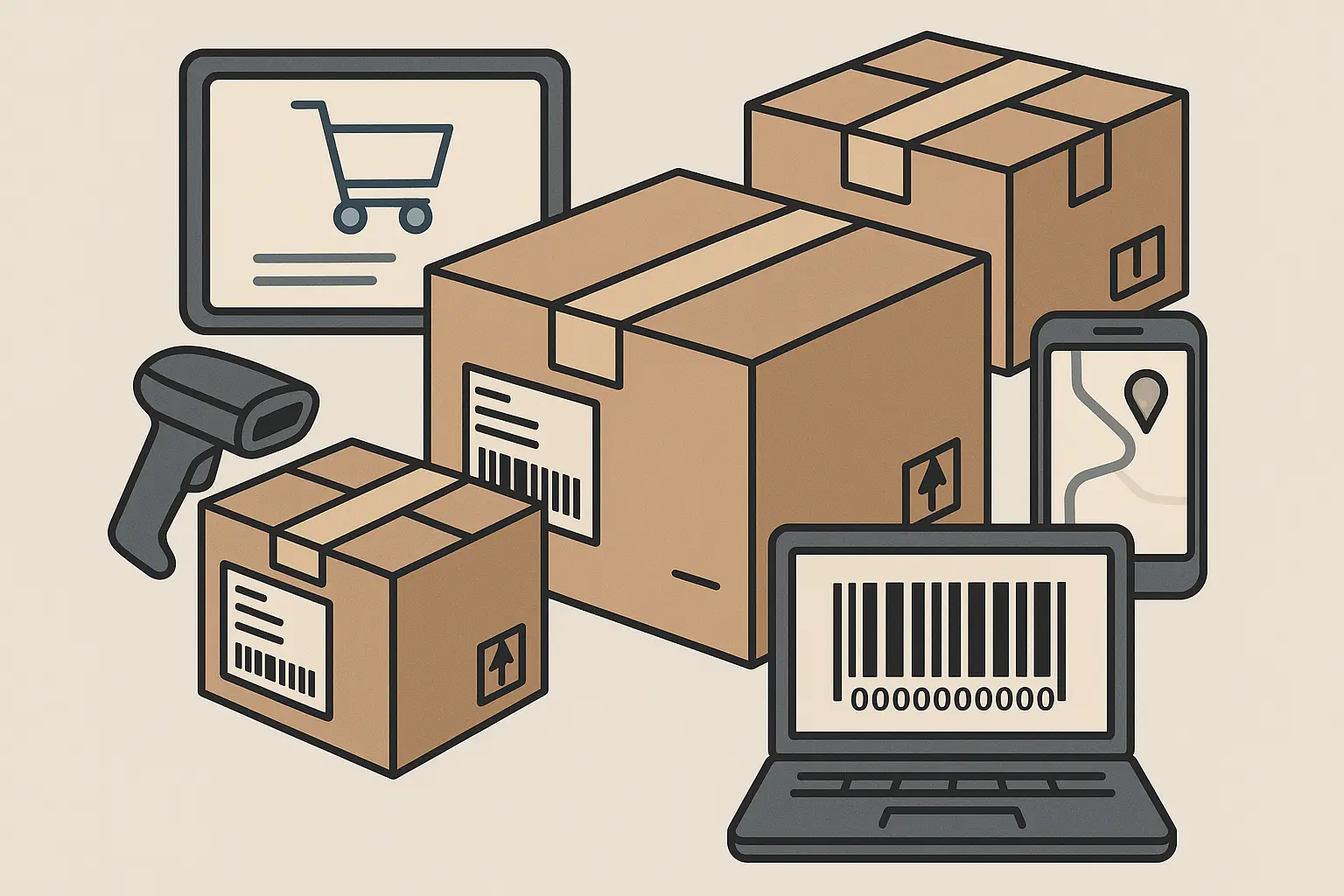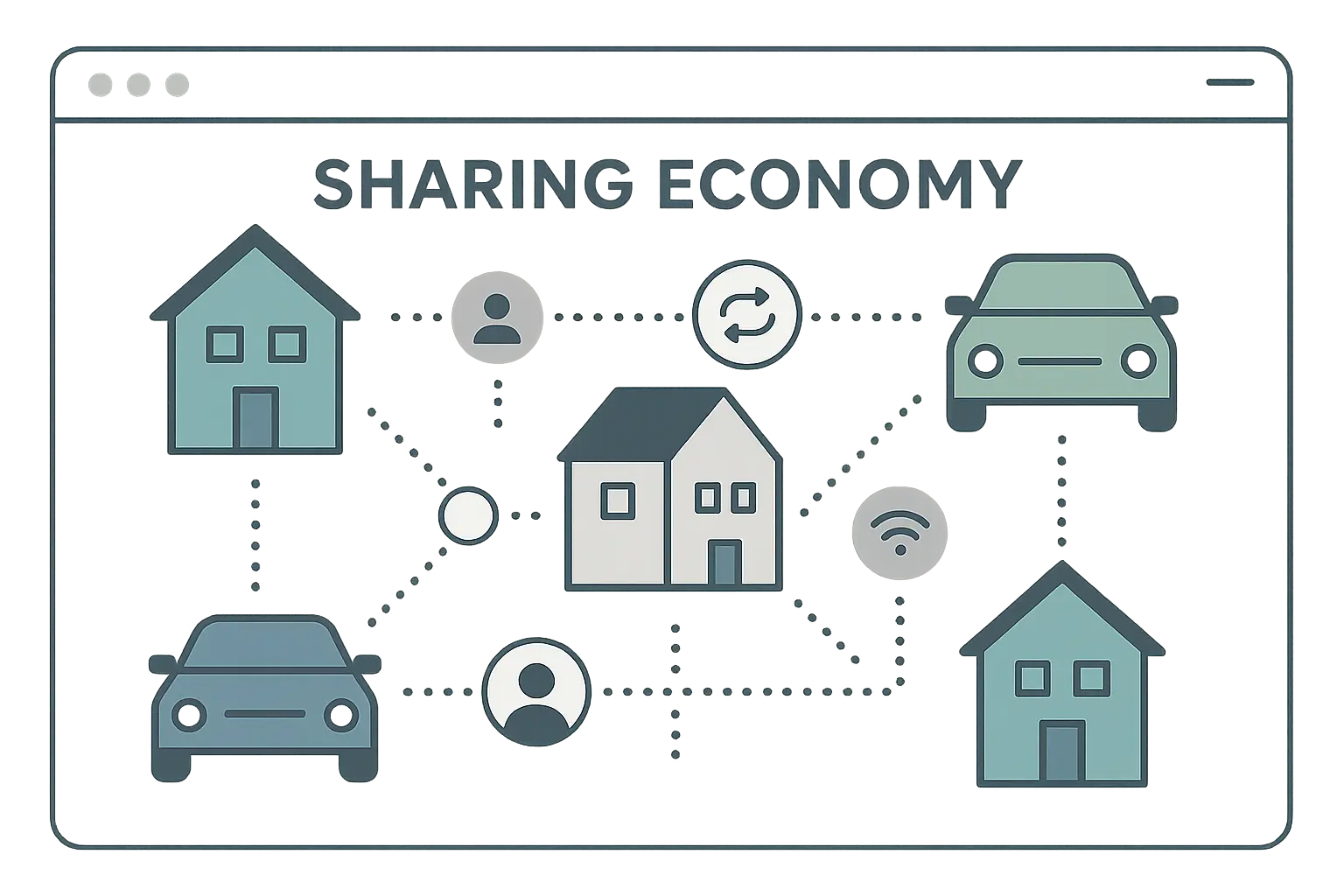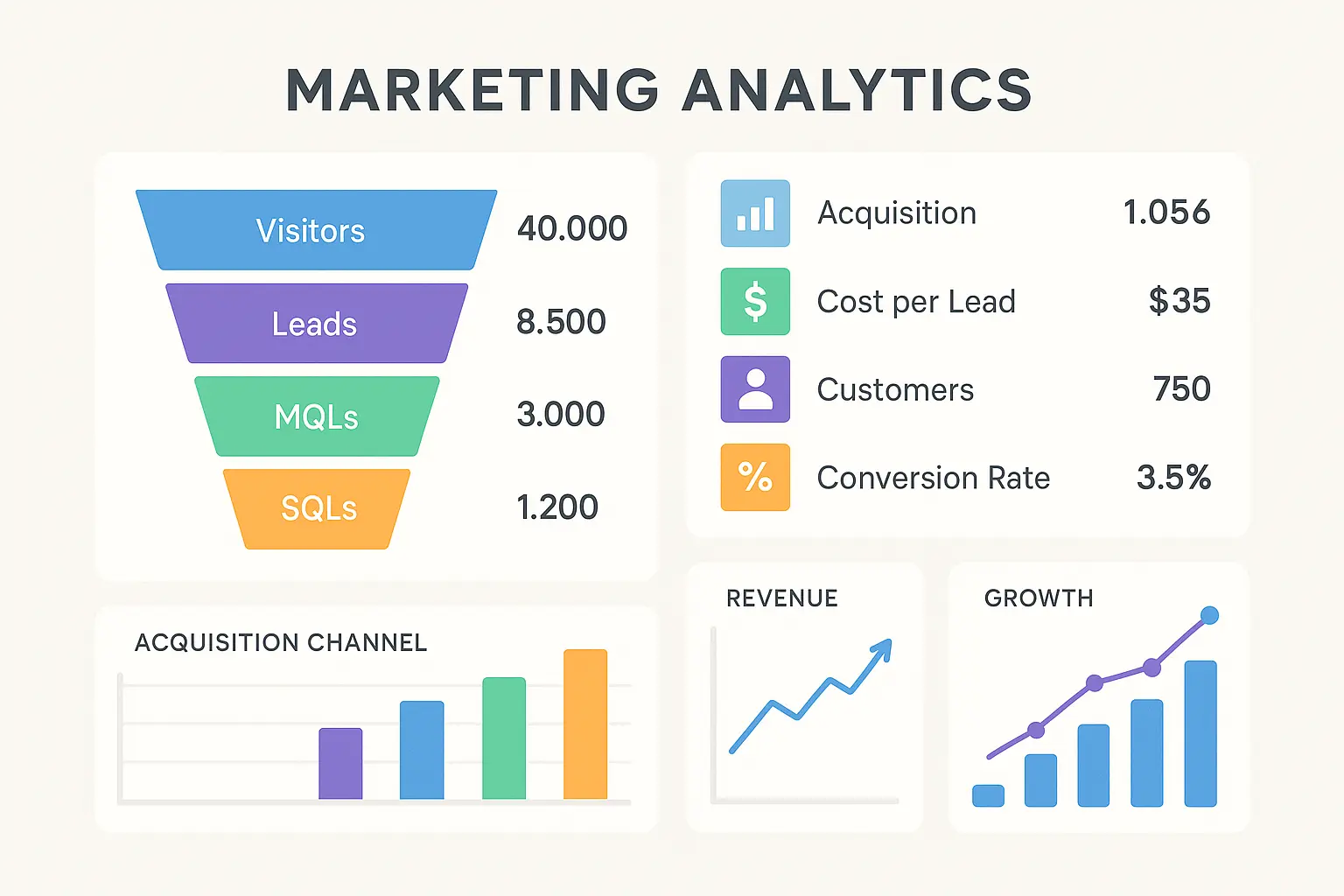Okay, so 90% of startups fail. We all know this stat, right? But here’s what bugs me – some founders seem to just… win. Like, consistently. What’s their deal?
I’ve been obsessing over this question for months now, diving deep into the stories of entrepreneurs who somehow cracked the code. After analyzing dozens of companies, I’ve pulled together 25 case studies that actually show you what works – not just the feel-good stuff you read in magazines.
Look, I’m not here to blow sunshine. These aren’t just “follow your dreams” stories. I dug into what these companies actually did differently – the boring stuff that actually matters when you’re trying to build something that doesn’t crash and burn.

What You’ll Find Here
I’ve organized this into groups that make sense – the digital-first companies, the fintech rebels, healthcare disruptors, sustainability pioneers, and platform juggernauts. Plus some frameworks you can actually use without needing an MBA.
Quick hits:
-
Digital companies like Shopify succeeded by solving their own problems first
-
Fintech winners like Stripe made developers’ lives easier (and developers love to talk)
-
Healthcare disruptors leveraged tech to cut through industry BS
-
Sustainability companies created new markets instead of fighting old ones
-
Platform businesses cracked the trust problem before scaling
-
The best case studies show clear problem-solution fit plus execution that doesn’t suck
The Digital-First Winners
Six companies basically said “screw the traditional way” and built better mousetraps. From Shopify turning e-commerce into something humans could actually use, to Patagonia making environmental activism profitable.
1. Shopify: From Snowboard Shop to E-commerce Empire
Here’s the thing though – Tobias Lütke wasn’t trying to build the next big thing. He just wanted to sell some damn snowboards online, but every e-commerce platform sucked. They were clunky, expensive, and clearly built by people who’d never actually tried to run an online store.
What’s wild is that Lütke could’ve just used whatever crappy platform was available and called it a day. Instead, he built something better and then realized – wait, other people probably hate these tools too.
That internal tool became the platform that now powers over 1.7 million businesses. Not because he had some grand vision, but because he solved his own problem first.
The real lesson: Sometimes the best opportunities are hiding in your own daily frustrations.
2. Warby Parker: Disrupting Traditional Eyewear
The eyewear industry was basically one giant monopoly (thanks, Luxottica) keeping prices stupid high. Warby Parker’s founders looked at $300 glasses that cost $30 to make and said “this is ridiculous.”
But here’s the genius part – they didn’t just make cheaper glasses. They solved the biggest objection to buying glasses online: you couldn’t try them on first. The home try-on program was so obvious in hindsight, but nobody else was doing it.
Throw in their buy-a-pair-give-a-pair thing, and suddenly you’ve got a brand that makes people feel good about their purchase instead of ripped off.
The real lesson: Find monopolistic industries where customers are getting screwed, then use technology to un-screw them.

3. Dollar Shave Club: Viral Marketing Meets Subscription Commerce
Michael Dubin spent $4,500 on a YouTube video that got 12,000 orders in 48 hours. But here’s what most people miss – the video worked because it called out real frustration with overpriced razors, not because it was funny (though it was pretty hilarious).
The founders spent months crafting that 90-second video. They identified three pain points: expensive razors, complicated buying process, and pretentious marketing from Gillette. Then they filmed in their warehouse with their own employees and focused on authentic delivery over polished production.
The result? 26 million views and a business model that had competitors scrambling to copy them.
But the viral video was just the beginning. The subscription model created predictable revenue that traditional retailers couldn’t touch. When Unilever bought them for $1 billion, it validated that great marketing plus a better business model beats everything.
The real lesson: Authentic storytelling that addresses real problems can disrupt even the most entrenched industries.
4. Allbirds: Sustainable Fashion Forward
Tim Brown and Joey Zwillinger proved you don’t have to choose between being sustainable and making money. Their merino wool shoes became the unofficial uniform of Silicon Valley – everyone from tech CEOs to celebrities was wearing them.
The direct-to-consumer approach let them keep premium pricing while being totally transparent about costs and environmental impact. This transparency built trust with customers who were tired of brands that talked sustainability but didn’t walk the walk.
The real lesson: Sustainability can actually be a competitive advantage when you combine it with products that don’t suck.
5. Glossier: Community-Driven Beauty Brand
Emily Weiss built a community before she built a company. Her beauty blog attracted 3 million Instagram followers who basically became co-creators of her products. Instead of guessing what customers wanted, she just asked them.
This community-first approach created insane brand loyalty. Customers weren’t just buying products – they were brand ambassadors generating organic marketing that money can’t buy.
The real lesson: Build a community around your mission first, then let that community guide your product development.
6. Patagonia: Purpose-Driven Business Excellence
Yvon Chouinard’s “Don’t Buy This Jacket” campaign seemed completely backwards, but it perfectly captured Patagonia’s environmental mission. The campaign actually increased sales because it showed they genuinely cared about sustainability, not just profit.
Patagonia proves that purpose-driven businesses can be crazy profitable when the mission aligns with what customers actually value. Their repair and reuse programs create loyalty that goes way beyond product quality.
The real lesson: Authentic purpose becomes your strongest competitive advantage when it’s baked into everything you do.
The Fintech Rebels
Five companies looked at financial services and said “we can do this better.” They prioritized user experience over industry tradition and built trust in sectors known for being, well, untrustworthy.
7. Stripe: Simplifying Online Payments
The Collison brothers solved a problem every developer faced – integrating payment processing was unnecessarily complex and took forever. Their solution? Seven lines of code instead of weeks of development hell.
When Stripe launched, traditional payment processors made you fill out endless applications, wait days for approval, and integrate APIs that were clearly designed by people who hated developers. Stripe’s founders figured out that developers were the real decision-makers, not business executives.
They created documentation that didn’t suck, provided test environments with realistic data, and offered integration you could finish in under an hour. They showed up at developer conferences, contributed to open-source projects, and built relationships with influential developers who became advocates.
This bottom-up approach meant that when developers became CTOs or started companies, they already trusted Stripe. Happy developers became their best salespeople.
The real lesson: When you make your customers’ jobs easier, they become your marketing department.

8. Robinhood: Democratizing Financial Services
Vlad Tenev and Baiju Bhatt eliminated trading fees when the entire industry depended on them for revenue. This forced established brokers to follow suit, proving that sometimes the best disruption strategy is giving away what competitors charge for.
The mobile-first interface made investing accessible to millennials who found traditional platforms intimidating and confusing. Gamification elements made the experience engaging rather than stressful.
The real lesson: Sometimes the best way to enter a market is to eliminate the industry’s primary revenue source.
9. Coinbase: Making Cryptocurrency Mainstream
Brian Armstrong built trust in an industry known for volatility and scams. While other crypto exchanges prioritized features for hardcore traders, Coinbase focused on security and regulatory compliance for regular people.
Their educational approach helped normal humans understand cryptocurrency without needing a computer science degree. Instead of assuming knowledge, they provided clear explanations and gradual onboarding.
The real lesson: In emerging industries, education and trust-building matter more than advanced features.
10. Square: Empowering Small Business Commerce
Jack Dorsey’s simple card reader transformed smartphones into payment terminals. This opened credit card processing to millions of small businesses that couldn’t afford traditional systems.
Square’s ecosystem approach created multiple revenue streams from the same customers. Point-of-sale led to lending, which led to payroll management. Each service increased customer stickiness.
The real lesson: Hardware can be your gateway to software services, creating multiple ways to monetize the same relationship.
11. Klarna: Buy Now, Pay Later Pioneer
Sebastian Siemiatkowski redefined consumer credit by eliminating interest charges and simplifying approval. This attracted younger consumers who were skeptical of traditional credit products (and honestly, rightfully so).
Klarna’s merchant partnerships created win-win situations. Retailers saw higher conversion rates and bigger orders, while consumers got flexible payment options without the complexity of traditional financing.
The real lesson: Reimagining traditional financial products for new consumer behaviors can create entirely new market categories.
Healthcare Disruptors
Four companies used technology to make healthcare less terrible. They navigated regulations, built consumer trust, and proved that innovation could actually improve outcomes while cutting costs.
12. Teladoc Health: Telemedicine Revolution
Michael Gorton’s vision for remote healthcare seemed way ahead of its time until COVID made it essential overnight. Teladoc’s early investment in technology and regulatory compliance positioned them perfectly when demand exploded.
The 10x growth during the pandemic wasn’t luck – it was years of building relationships with healthcare providers and insurance companies. When everyone suddenly needed telemedicine, they had the systems and partnerships to scale.
The real lesson: Sometimes being “too early” means you’ll be perfectly positioned when the market catches up.

13. 23andMe: Personal Genomics Commercialization
Anne Wojcicki made genetic testing accessible by dropping costs from thousands of dollars to $99. This price point opened genetic information to millions who were curious about ancestry and health risks but couldn’t justify the old pricing.
The data monetization through pharmaceutical partnerships created ongoing revenue. Customers paid for testing, then their anonymized data generated revenue through research collaborations.
The real lesson: Consumer data can become a valuable asset when collected ethically and used for legitimate research.
14. Moderna: mRNA Technology Breakthrough
Stéphane Bancel spent a decade developing mRNA technology before finding the perfect application. COVID validated years of research and investment in months.
Moderna’s platform approach means their mRNA tech can address multiple diseases. The COVID vaccine was just the beginning – cancer vaccines and rare disease treatments are in development.
The real lesson: Platform technologies that solve multiple problems are often more valuable than single-purpose solutions.
15. Peloton: Connected Fitness Innovation
John Foley combined high-end hardware with subscription content to create home fitness that didn’t suck. The community aspect – live classes and leaderboards – replicated group fitness motivation at home.
The pandemic boom and bust taught valuable lessons about sustainable growth. Peloton’s challenge was maintaining engagement when gyms reopened and people had options again.
The real lesson: Hardware-software combinations create strong loyalty, but you need to continuously evolve to keep people engaged.
Sustainability Pioneers
Five companies built successful businesses around environmental sustainability. They created new markets, achieved premium pricing, and built strong brands while actually helping the planet.
16. Tesla: Electric Vehicle Mass Market Adoption
Elon Musk’s strategy of starting with premium vehicles (Roadster) to fund mass-market cars (Model 3) was counterintuitive but brilliant. This approach established Tesla’s credibility while generating R&D revenue.
Tesla’s cool and all, but let’s not pretend Musk didn’t have a massive head start with PayPal money. Most founders can’t just decide to revolutionize transportation and have billions lying around.
That said, the Supercharger network created a competitive moat that traditional automakers couldn’t easily replicate. Tesla didn’t just build cars – they built the entire ecosystem needed for electric vehicle adoption.
The real lesson: Sometimes you need to build the whole ecosystem, not just the product, to enable market adoption.

17. Beyond Meat: Plant-Based Protein Revolution
Ethan Brown focused on replicating meat’s taste and texture rather than creating obviously different products. The goal wasn’t serving vegetarians – it was converting meat eaters.
Strategic partnerships with McDonald’s and other chains provided distribution and credibility that would’ve taken years to build independently. These partnerships validated the product for skeptical consumers.
The real lesson: When creating new product categories, focus on converting existing behaviors rather than serving niche markets.
18. Impossible Foods: Science-Driven Food Innovation
Pat Brown’s use of molecular biology to identify heme protein as the key to meat flavor was a scientific breakthrough that became a competitive advantage. This research created intellectual property competitors couldn’t easily copy.
The Burger King partnership with the Impossible Whopper brought plant-based meat to mainstream fast food. This reached consumers who’d never visit health food stores.
The real lesson: Deep scientific research can create sustainable competitive advantages in consumer products.
19. Oatly: Oat Milk Global Expansion
Toni Petersson’s irreverent marketing made oat milk cool rather than just healthy. The brand personality attracted younger consumers who valued both sustainability and authenticity.
Celebrity investments from Oprah and Jay-Z provided credibility and marketing reach that traditional advertising couldn’t match. These partnerships also validated the market
The real lesson: Brand personality can be as important as product quality in creating consumer preference.
20. First Solar: Thin-Film Solar Technology Leadership
Mike Ahearn’s focus on thin-film technology rather than silicon panels created cost advantages that made solar competitive with fossil fuels. This technology differentiation was crucial for achieving scale.
Manufacturing in gigawatt facilities reduced costs through economies of scale. First Solar proved clean technology could compete on price, not just environmental benefits.
The real lesson: Technology differentiation plus manufacturing scale can create cost advantages in competitive markets.
Platform Economy Giants
Five platform companies created new markets by connecting users and solving trust problems. They built network effects and community while generating positive social impact.
21. Airbnb: Sharing Economy Pioneer
Brian Chesky and Joe Gebbia created a market by enabling strangers to stay in each other’s homes. The innovation wasn’t technology – it was building trust between people who’d never met.
When Airbnb launched, the biggest barrier wasn’t tech – it was convincing people to trust strangers. They built comprehensive trust systems: verified photos, government ID verification, two-way reviews, secure payments, 24/7 support, and a $1 million host guarantee.
This multi-layered approach to trust became the foundation that enabled the sharing economy to scale globally.
The trust-building strategies that made Airbnb successful are explored in depth in our comprehensive Airbnb case study analysis, which reveals how platform businesses overcome initial skepticism.
Regulatory battles worldwide were expensive but necessary for market creation. Airbnb’s navigation of local regulations became a competitive advantage as new entrants faced the same challenges.
The real lesson: Platform businesses must solve trust and safety problems before they can scale.

22. Uber: Transportation Network Revolution
Travis Kalanick and Garrett Camp disrupted taxis by providing better user experience and dynamic pricing. The technology enabled efficient supply and demand matching.
Uber’s regulatory fights were messy as hell. They probably could’ve handled some of it better early on, but their aggressive expansion established market presence before competitors could respond.
Similar platform dynamics are analyzed in our detailed Uber case study, which examines how network effects create defensible market positions.
The real lesson: Sometimes you need to fight regulatory battles to create new markets, but first-mover advantage can be worth the cost.
23. DoorDash: Food Delivery Market Leadership
Tony Xu’s focus on suburban markets while competitors targeted cities was brilliant. Suburban restaurants had fewer delivery options, making them more willing to partner with DoorDash.
The pandemic accelerate d food delivery adoption, but DoorDash’s suburban focus meant they were already established in markets that became essential during lockdowns.
The real lesson: Serving underserved markets can provide sustainable competitive advantages when those markets become mainstream.
24. Zoom: Video Communication Ubiquity
Eric Yuan’s obsession with reliability and ease of use made Zoom the preferred video platform. While competitors focused on features, Zoom focused on making video calls that actually worked.
The freemium model drove adoption by removing barriers to trial. Users could experience Zoom’s superior quality before deciding to upgrade to paid plans.
The real lesson: In tech products, reliability and user experience often matter more than feature lists.
25. Duolingo: Gamified Language Learning
Luis von Ahn’s gamification approach made language learning addictive rather than tedious. Streaks, achievements, and social competition motivated users to maintain daily practice habits.
The freemium model with advertising revenue made language education accessible globally while generating sustainable revenue. Premium subscriptions provided additional features for motivated learners.
The real lesson: Gamification can transform traditionally difficult activities into engaging experiences that users actually want to continue.

What Makes Case Studies Actually Useful
Not all case studies are created equal. Here’s what separates the valuable ones from the marketing fluff:
Relevance and Timeliness
The best case studies address current market conditions. Post-pandemic landscapes, digital transformation, and changing consumer behaviors make some older examples less applicable.
Companies like Zoom and Peloton provide insights into pandemic-driven growth, while Tesla and Beyond Meat show long-term sustainability trends. These remain relevant because they address ongoing market shifts.
Learning Value You Can Actually Use
The best examples show clear problem-solution fit and scalable business models. They demonstrate how entrepreneurs identified market gaps, developed solutions, and executed growth strategies others can adapt.
Risk management and pivot strategies matter equally. Peloton shows both explosive growth and the challenges of maintaining momentum when conditions change.
Real Data, Not Marketing Stories
Verifiable metrics separate valuable case studies from feel-good stories. Public companies like Shopify and Tesla provide SEC filings documenting actual performance over time.
Access to founder insights through interviews and documented decision-making adds depth. Third-party validation from analysts and researchers confirms reported outcomes.
Works Beyond One Industry
The most valuable lessons work across industries. Subscription models work for razors (Dollar Shave Club), software (Shopify), and fitness (Peloton). Direct-to-consumer strategies apply to eyewear (Warby Parker), shoes (Allbirds), and cosmetics (Glossier).
What works in Silicon Valley may need adaptation elsewhere, but core principles often remain valid.

How to Actually Apply This Stuff
Here’s where most people mess up – they read case studies like entertainment instead of extracting actionable frameworks.
Strategic Decision Making That Works
Tesla’s long-term vision versus short-term profitability trade-offs show the importance of patient capital and stakeholder alignment. Musk’s willingness to invest heavily in manufacturing and infrastructure paid off when the market matured.
Airbnb’s regulatory navigation shows how platform companies can work with local governments rather than against them. Building relationships with regulators early prevents costly battles later.
Operational Excellence Principles
Shopify’s platform scaling shows the importance of building systems that handle exponential growth. Their developer-first approach created network effects traditional competitors couldn’t replicate.
Zoom’s focus on reliability during explosive growth shows how operational excellence becomes competitive advantage. Users chose Zoom because it worked consistently when other platforms failed.
These operational principles align with strategies discussed in our advanced case study success strategies guide, which provides frameworks for implementing scalable business operations.
Innovation Management Approaches
Moderna’s decade-long investment in mRNA technology before finding the right application shows the value of platform thinking. Building foundational capabilities that address multiple problems creates more opportunities for success.
The key is balancing breakthrough innovation with practical application. Companies that focus too heavily on either side often struggle to achieve sustainable growth.

How Modern Marketing Addresses These Challenges
Look, most of these companies figured out marketing through trial and error. Some got lucky with timing, others just outspent everyone. The data-driven stuff helps, but let’s be honest – sometimes you just need to try things and see what sticks.
Data-Driven Market Validation
Many successful entrepreneurs succeeded through intuitive market timing, but most startups need systematic validation before major investments. Modern marketing agencies use predictive analytics and AI-driven market research to identify opportunities traditional analysis might miss.
Understanding market opportunities through data analysis is crucial, as detailed in our comprehensive market sizing guide, which helps entrepreneurs validate business opportunities systematically.
Scientific market analysis helps entrepreneurs avoid the 42% failure rate caused by lack of market demand. Instead of guessing what customers want, data-driven approaches validate hypotheses before significant resource allocation.
Customer Acquisition Cost Optimization
Companies like Peloton experienced unsustainable customer acquisition costs that led to market corrections. Real-time campaign optimization and multi-channel attribution modeling help startups identify cost-effective acquisition channels before burning through funding.
Email marketing strategies extract additional value from existing users, reducing reliance on expensive paid acquisition. This mirrors how companies like Glossier built community engagement that generated organic growth.
Brand Positioning for Competitive Markets
Startups like Beyond Meat needed to create entirely new product categories while competing against established players. LLM optimization ensures brand visibility in AI-generated search results, while content strategies position brands for discovery through emerging channels.
Modern search optimization techniques, including generative engine optimization strategies, help entrepreneurship case study insights reach the right audiences through AI-powered search platforms.
The Marketing Agency’s approach combines the transparency that built trust for companies like Coinbase with the data-driven decision making that enabled Stripe’s developer-first success. This partnership model helps entrepreneurs navigate marketing challenges that often determine whether ventures succeed or fail.
Ready to apply these case study insights to your own venture? We can discuss how data-driven marketing strategies can accelerate your growth while avoiding the common pitfalls that cause 90% of startups to fail.

What I Actually Learned From All This
These entrepreneurs didn’t succeed by accident. They identified real problems, developed scalable solutions, and executed with relentless focus on customer value. Whether it was Shopify simplifying e-commerce, Tesla building charging infrastructure, or Airbnb creating trust between strangers, each success involved solving fundamental challenges others had ignored or accepted as unchangeable.
What strikes me most is how often the winning strategy seemed obvious in hindsight but required serious guts to pursue initially. Eliminating trading fees, giving away language education, or selling expensive exercise bikes with monthly subscriptions all seemed risky until they proved successful.
The common thread isn’t the specific tactics – it’s the mindset of continuous learning, rapid iteration, and genuine commitment to solving customer problems. These entrepreneurs built businesses that created value for everyone, not just shareholders. That sustainable approach to growth separated temporary successes from lasting companies.
Here’s the thing though – case studies provide frameworks, not formulas. The specific tactics that worked for these companies might not work in your industry or market, but the underlying principles of customer focus, operational excellence, and strategic thinking remain universally applicable.
As you apply these insights to your own journey, remember that success often comes from combining multiple approaches rather than copying any single strategy. The entrepreneurs featured here succeeded because they adapted proven principles to their unique situations while maintaining focus on what actually matters: solving real problems for real people.



